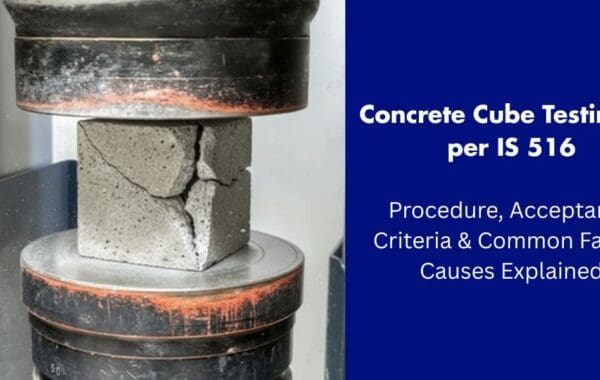In the construction industry, where safety and quality are non-negotiable, even a slight error in testing can lead to massive failures. From towering skyscrapers to resilient bridges, every structure stands on the foundation of accurate testing and reliable data. But how do we ensure that these test results remain consistent, error-free, and aligned with industry standards?
The answer lies in Proficiency Testing (PT)—a powerful tool that keeps construction laboratories sharp, precise, and trusted.
What is Proficiency Testing and Why Should You Care?
Think of Proficiency Testing as a reality check for laboratories. It’s a process where test samples are sent to multiple labs, and their results are compared to identify any deviations. This rigorous practice ensures that the tests performed on construction materials—like cement, steel, and concrete—deliver trustworthy results every time.
Without Proficiency Testing, even the most reputed labs risk producing inconsistent data, putting entire projects and countless lives at risk.
Why Proficiency Testing is Critical for Construction Projects
When you’re building something meant to last for decades, precision isn’t a luxury—it’s a necessity. Proficiency Testing helps construction companies and testing labs ensure that their processes meet the highest standards. Here’s why it matters:
✅ Concrete Confidence in Concrete
Ensures the compressive and flexural strength tests meet exact specifications.
Guarantees that the foundation materials will withstand the test of time.
✅ Stronger Steel, Stronger Structures
Verifies the tensile strength, yield stress, and elongation capacity of steel.
Reduces the risk of structural failure by ensuring reinforcement materials are up to the mark.
✅ Soil Stability, Secured Foundations
Confirms soil composition through precise moisture content and compaction analysis.
Prevents ground movement that could weaken a structure over time.
✅ Asphalt Accuracy for Safer Roads
Ensures that bitumen and asphalt properties, such as viscosity and softening point, meet durability standards.
How Proficiency Testing Works: A Behind-the-Scenes Look
Test Samples Are Sent to Participating Labs
Identical samples are distributed to different labs to evaluate their performance.Laboratories Conduct the Tests
Each lab follows defined methodologies and submits its results for analysis.Results Are Compared and Analyzed
The test results are compared to identify deviations from reference values.Feedback and Corrective Actions
If inconsistencies arise, corrective measures are suggested to improve accuracy.
The Real Cost of Inaccurate Test Results
A minor error in test results may seem insignificant, but in construction, it can cost millions—or worse, lead to catastrophic failures. Imagine a high-rise building with subpar concrete or a bridge supported by weak steel. The financial and reputational damage can be irreversible.
Proficiency Testing helps identify potential errors before they become costly mistakes. It ensures that the quality of materials used in construction meets global standards and that laboratories maintain consistency in their testing practices.
Benefits Beyond Compliance: Why PT is a Long-Term Investment
Peace of Mind for Stakeholders
Builds trust with clients, architects, and regulators by ensuring top-notch quality.Accreditation and Compliance
Helps laboratories maintain accreditation under ISO/IEC 17025 by demonstrating consistent performance.Error Detection and Continuous Improvement
Identifies weak points in testing methods, allowing labs to refine their processes.Enhanced Reputation and Market Edge
Labs known for accurate results gain a competitive advantage in the construction industry.
Challenges in Proficiency Testing—and How to Overcome Them
While PT is essential, it comes with its own set of challenges:
Sample Homogeneity – Ensuring that all labs receive identical samples to maintain accuracy.
Data Interpretation – Analyzing deviations correctly to apply appropriate corrective actions.
Meeting Deadlines – Timely submission of results to avoid delays in construction projects.
Partnering with a reliable PT provider can help overcome these challenges and keep your lab performing at its best.
Why Construction Companies Should Push for Proficiency Testing
For construction companies, ensuring that their project materials pass stringent quality checks isn’t just about compliance—it’s about safeguarding their reputation and protecting the lives of those who rely on their structures. By encouraging their partner laboratories to participate in regular Proficiency Testing, they:
Minimise project risks and delays.
Ensure consistency and quality in construction materials.
Build long-lasting trust with clients and regulatory authorities.
Conclusion: Proficiency Testing—A Pillar of Safety and Trust
In an industry where even the smallest error can lead to disaster, Proficiency Testing is a safeguard that protects investments, reputations, and lives. For construction companies and testing laboratories alike, investing in PT is not just about meeting standards—it’s about setting them.
So, the next time you see a towering building or drive across a sturdy bridge, remember: behind those structures are accurate tests, trusted results, and a commitment to quality driven by Proficiency Testing.
Ready to elevate your business performance and build trust that lasts? Start with Proficiency Testing today!



